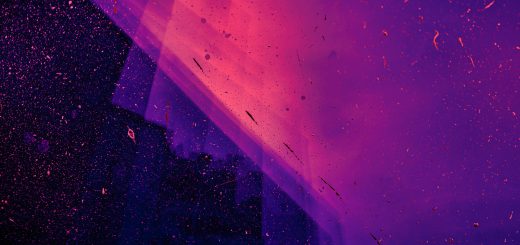Why Denmark is a Global Leader in Urban Design

Hey there, amazing readers! 🖐️ Just a quick note: yes, we know there are a lot of ads here. Trust us, we get it—it’s not the prettiest look, but they help us keep this blog alive and kicking. Those pesky little ads cover the costs of all the behind-the-scenes magic, from hosting and tech stuff to creating content we hope you’ll love.
We’re committed to delivering quality posts, and your support (even just sticking around despite the ads) means everything to us. So, bear with us, and thanks for helping us keep the good vibes rolling. Now, on to the fun stuff! 😉
TRANSLATE BUTTON AT THE END OF THE ARTICLE
A Quick Overview
Denmark has long held a reputation for its innovative approaches to urban design.
From charming cobblestone streets to state-of-the-art sustainable buildings, the Danish cities present a captivating blend of history, culture, and modernity.
So, what’s behind Denmark’s prowess in urban planning?
In this article, we’ll explore various factors that contribute to Denmark’s status as a global leader in urban design, showcasing the principles and practices that not only make these cities aesthetically pleasing but also functionally superior.
Introduction: The Magic of Denmark’s Urban Spaces
When I think of Denmark, I picture vibrant streets filled with life.
The towns and cities have a certain magic—one that invites everyone to take a stroll and soak in the atmosphere.
Cities like Copenhagen and Aarhus shine with their unique environments.
But what creates this magic?
The answer lies in the philosophy of urban design embraced by Danish planners.
They prioritize a holistic approach, integrating aesthetics, functionality, and community needs.
This methodology transforms urban spaces from mere functional areas into vibrant living environments.
In Denmark, public spaces play a vital role.
They are not just patches of green but are viewed as social hubs.
These spots encourage interactions among residents, fostering a sense of community.
On any given weekend, these areas buzz with life—families picnicking, friends gathering, and artists showcasing their talents.
The design process is not an afterthought; it’s a well-considered strategy that enhances the quality of life for all.
Moreover, the influence of Danish design extends beyond mere architecture.
It touches every aspect of city life, leading to a balanced integration of nature and built environments.
The result is an urban landscape that feels both welcoming and functional.
Embracing Sustainability in City Planning and Design
Sustainability is at the core of Denmark’s urban design ethos.
Danish cities are pioneers in creating eco-friendly environments.
Have you ever wondered how cities can be both beautiful and sustainable?
In Denmark, it’s an art form.
Take Copenhagen, for example.
The city aims to become carbon neutral by 2025—a bold goal that drives every planning decision.
This ambition manifests in various ways:
Energy-efficient buildings: New constructions often adhere to stringent energy standards, using materials that reduce energy consumption.
Renewable energy sources: Wind power is a significant player here.
Wind turbines dot the coastline, generating a substantial portion of the city’s energy needs.
Green roofs: These aren’t just pretty; they help insulate buildings while providing space for flora and fauna.
What’s fascinating is how these sustainable methods also enhance the aesthetic appeal of the city.
For instance, the integration of green roofs and solar panels becomes a part of the building’s look rather than an afterthought.
Danish urban planners also focus on reducing waste through innovative recycling systems.
Waste management is not just about disposal; it’s about creating a circular economy.
This forward-thinking approach is a practical solution that keeps the environment thriving.
The Role of Cycling in Danish Urban Transportation
If you’ve ever visited Copenhagen, you’ll notice an astonishing number of bicycles.
Cycling isn’t just a hobby here; it’s a way of life.
Here’s a fun fact: more than 60% of Copenhagen’s residents commute by bike daily.
Isn’t that incredible?
The Danish government has invested heavily in cycling infrastructure.
This includes:
Dedicated bike lanes: These lanes are well-marked and separated from traffic, making cycling safe and enjoyable.
Bicycle parking facilities: They are everywhere!
You’ll find bike racks and parking lots integrated into public transport stations.
Bike-sharing programs: These initiatives promote cycling among tourists and residents alike.
But cycling in Denmark offers more than just a means of transport.
It contributes to public health, reduces traffic congestion, and lowers carbon emissions.
And let’s not forget the joy of cycling!
Riding through Danish streets with the wind in your hair is an experience like no other.
In Denmark, cycling is embraced not only as transportation but as a lifestyle choice.
It’s a daily ritual that brings people together—friends meeting for coffee, families enjoying outings, and individuals getting exercise while commuting.
Community Engagement: A Cornerstone of Urban Design
What if I told you that the key to successful urban planning lies in community engagement?
In Denmark, this principle stands strong.
Residents actively participate in shaping their environment, making them feel more connected to the spaces they inhabit.
Public forums and consultations are commonplace.
Here’s how it works:
Workshops and meetings: City planners often hold workshops where residents can voice their opinions and share ideas.
This makes the planning process a collaborative effort.
Design competitions: Local communities sometimes engage in competitions to design parks or public spaces, fostering creativity and ownership.
Feedback mechanisms: Surveys and feedback channels ensure that community voices are heard long after projects are completed.
This inclusive approach fosters trust and understanding.
People care more about their neighborhoods when they have a hand in shaping them.
When I visited Aarhus, I saw how inclusive designs created spaces that resonated with local culture, ensuring a sense of belonging and pride.
Innovative Green Spaces: Parks and Nature in Cities
Imagine stepping out of your apartment to find a lush park filled with trees, flowers, and walking paths.
In Denmark, this vision is a reality.
Green spaces are thoughtfully integrated into urban environments, providing residents with a breath of fresh air amidst the hustle and bustle of city life.
Danish cities are famed for their parks and nature walks.
Here’s what makes them special:
Accessibility: Parks are strategically located, ensuring that they are within walking distance for most residents.
This encourages outdoor activities and social gatherings.
Ecological design: These spaces are designed to support local ecosystems.
Native plants attract pollinators, while water features help manage stormwater runoff.
Playgrounds and recreational areas: Parks are equipped with facilities for all ages, from playgrounds for kids to exercise stations for adults.
One of my fondest memories from my time in Copenhagen was a stroll through the King’s Garden.
The park was alive with people enjoying picnics, children playing, and even artists sketching the scenery.
It illustrated how these green spaces serve as community hubs, fostering social interaction and outdoor enjoyment.
Moreover, the emphasis on nature in design plays a crucial role in mental well-being.
Studies show that access to green spaces has a positive impact on mental health, reducing stress and anxiety.
For the Danes, this connection with nature is not just a trend; it’s a lifestyle.
The Importance of Mixed-Use Developments in Denmark
Mixed-use developments are a hallmark of Danish urban design.
These are areas where residential, commercial, and recreational spaces coexist harmoniously.
This concept is revolutionary for urban life, reducing the need for long commutes and creating vibrant neighborhoods.
Here’s how mixed-use developments enrich Danish cities:
Convenience: Residents have access to shops, restaurants, and services right outside their doors.
Imagine grabbing coffee before heading to work—all within walking distance!
Community interaction: These developments encourage social engagement.
You might bump into your neighbor while picking up groceries or enjoy a casual chat at the local café.
Reduced traffic: With everything nearby, residents are less reliant on cars, which helps decrease congestion and air pollution.
In Copenhagen, the Vesterbro district is a prime example of successful mixed-use development.
Once an industrial area, it has transformed into a bustling neighborhood filled with cafes, shops, and homes.
This revitalization demonstrates how thoughtful planning can breathe new life into urban spaces.
Mixed-use developments also promote diversity.
They attract a mix of people from different backgrounds, enriching the community.
This blend fosters an inclusive atmosphere that is palpable the moment you step into these neighborhoods.
Smart Technology: Enhancing Urban Living in Denmark
In the age of technology, Denmark is setting an example with its innovative use of smart technology in urban design.
Smart cities like Copenhagen leverage technology to enhance the quality of life for residents.
It’s all about making life easier and more efficient.
Here are some ways smart technology is improving urban living:
Smart traffic management: Sensors monitor traffic flow and adjust traffic signals in real-time, reducing congestion and promoting smoother travel.
Smart waste management: Waste bins equipped with sensors notify collection services when they’re full, optimizing waste collection routes.
Public Wi-Fi: Many urban areas in Denmark offer free public Wi-Fi, allowing residents and visitors to stay connected conveniently.
I remember walking through the streets of Copenhagen and marveling at the seamless integration of technology.
Smart lights that turned on as I approached and public displays offering real-time transit information made navigating the city a breeze.
Furthermore, these technologies not only enhance convenience but also contribute to sustainability.
For instance, efficient energy use and waste management help minimize the city’s carbon footprint.
Danish cities are not just keeping up with technological trends; they are leading the charge in creating smart urban environments that prioritize residents’ needs while focusing on sustainability.
Public Art: Adding Character to Danish Urban Areas
Public art in Denmark is not just decoration; it’s a vital part of the urban experience.
From sculptures to murals, art adds character and depth to cities, making them more engaging and accessible.
Here’s how public art plays a role in urban design:
Cultural expression: Art reflects the community’s identity and history, allowing residents to connect with their heritage.
Enhancing public spaces: Art installations can transform mundane areas into vibrant gathering spots, sparking curiosity and conversation.
Encouraging exploration: Well-placed art pieces often serve as landmarks, guiding residents and tourists through the city.
Take the famous “The Little Mermaid” statue in Copenhagen.
This iconic piece draws visitors from around the globe, showcasing the city’s rich cultural narrative.
However, it’s not just about famous landmarks.
Smaller installations scatter throughout neighborhoods, bringing art to everyday life.
Public art also engages the community.
Artists often collaborate with locals to create meaningful pieces, fostering a sense of ownership.
The result is a unique tapestry of creativity that continually evolves.
Art can also be a catalyst for change.
It prompts conversations about social issues and inspires collective action, proving that urban design and creativity go hand in hand.
Robust Public Transit: Connecting Communities Seamlessly
In Denmark, public transit is more than just a means of getting from point A to B; it’s an interconnected network that promotes accessibility and inclusivity.
The Danish public transportation system is efficient, reliable, and user-friendly.
Here’s how it connects communities effectively:
Integrated systems: Trains, buses, and metros work seamlessly together, allowing for smooth transfers between modes of transport.
Affordable fares: Pricing structures ensure that public transit is accessible to everyone, promoting its use.
Frequent service: Buses and trains arrive regularly, minimizing wait times and encouraging residents to rely on public transport.
During my visit to Aarhus, I was impressed by the ease of using public transport.
I hopped on a bus, explored the city, and never felt stranded.
It was a reminder of how efficient public transit can change urban living.
Moreover, the focus on public transport contributes to environmental sustainability.
By reducing dependency on cars, Danish cities effectively lower traffic congestion and pollution levels.
Public transit in Denmark is a model for other countries to follow.
It serves as a crucial link in the urban design framework, enriching the lives of residents while promoting sustainability.
Historic Preservation: Blending Old with New Designs
In Denmark, there’s a deep respect for history.
This reverence is evident in how cities balance historic preservation with modern development.
Instead of replacing old structures, Danish planners often renovate and repurpose them, creating a harmonious blend of past and present.
Here’s how this philosophy takes shape:
Adaptive reuse: Buildings are repurposed for new functions, preserving their architectural integrity while serving modern needs.
Careful renovations: Restoration projects focus on maintaining historical elements, ensuring that the character and charm remain intact.
Cultural landmarks: Historic sites are celebrated and often incorporated into the fabric of urban life, enhancing cultural identity.
Copenhagen’s Nyhavn district serves as a splendid example.
The colorful 17th-century harbor is a popular destination, seamlessly integrating dining, tourism, and historical significance.
This approach not only preserves history but also brings life to older structures.
It fosters connections between generations, allowing residents to engage with their city’s heritage.
By blending the old with the new, Denmark creates urban spaces that are culturally rich.
This philosophy teaches us the importance of valuing our history while looking ahead to the future.
Case Studies: Successful Urban Projects in Denmark
Let’s dive into some remarkable urban projects that showcase Denmark’s leadership in design.
Each case reflects the principles we’ve discussed, illustrating the effectiveness of innovative urban planning.
Copenhagen’s Superkilen Park: Situated in the Nørrebro district, this park is a celebration of diversity.
It features elements from various cultures, showcasing an inclusive community.
The park serves as a vibrant gathering spot, combining art, recreation, and culture.
Aarhus’ Dokk1: This modern library and cultural center is a hub for learning and creativity.
Dokk1 emphasizes accessibility and sustainability, housing exhibition spaces, cafes, and public meeting areas.
It’s a prime example of how urban design can foster community engagement.
The Copenhagen Harbor Bath: This project transformed a former industrial port into a recreational destination.
The design integrates swimming areas, lounge spaces, and waterfront promenades, making it a popular gathering spot while promoting water quality.
These case studies illustrate how thoughtful urban design can create impactful spaces that resonate with communities.
Each project reflects the values of sustainability, inclusiveness, and creativity, setting a benchmark for cities globally.
Conclusion: Lessons from Denmark for the World to Learn
As we’ve explored throughout this article, Denmark stands tall as a global leader in urban design.
Its commitment to sustainability, community engagement, and innovative solutions has transformed cities into vibrant, livable spaces.
What can we learn from Denmark?
Here are a few key takeaways:
Prioritize sustainability: Urban planning should focus on eco-friendly practices that benefit both residents and the environment.
Involve the community: Engaging residents in the planning process fosters a sense of ownership and belonging.
Integrate nature: Green spaces and parks are essential for mental well-being and social interaction.
Promote public transport: An efficient public transit system connects communities and reduces congestion.
Denmark’s approach to urban design is an inspiring model for cities worldwide.
By embracing these principles, we can create urban spaces that are not just functional but enriching, making our cities places where everyone can thrive.
Denmark reminds us that good urban design is about more than just buildings; it’s about creating environments that nurture communities and foster connection.

The Enlightenment Journey is a remarkable collection of writings authored by a distinguished group of experts in the fields of spirituality, new age, and esoteric knowledge.
This anthology features a diverse assembly of well-experienced authors who bring their profound insights and credible perspectives to the forefront.
Each contributor possesses a wealth of knowledge and wisdom, making them authorities in their respective domains.
Together, they offer readers a transformative journey into the realms of spiritual growth, self-discovery, and esoteric enlightenment.
The Enlightenment Journey is a testament to the collective expertise of these luminaries, providing readers with a rich tapestry of ideas and information to illuminate their spiritual path.
Our Diverse Expertise 🌟
While our primary focus is on spirituality and esotericism, we are equally passionate about exploring a wide range of other topics and niches 🌍📚. Our experienced team is dedicated to delivering high-quality, informative content across various subjects ✨.
To ensure we provide the most accurate and valuable insights, we collaborate with trusted experts in their respective domains 🧑🏫👩🏫. This allows us to offer well-rounded perspectives and knowledge to our readers.
Our blog originally focused on spirituality and metaphysics, but we’ve since expanded to cover a wide range of niches. Don’t worry—we continue to publish a lot of articles on spirituality! Frequently visit our blog to explore our diverse content and stay tuned for more insightful reads.





